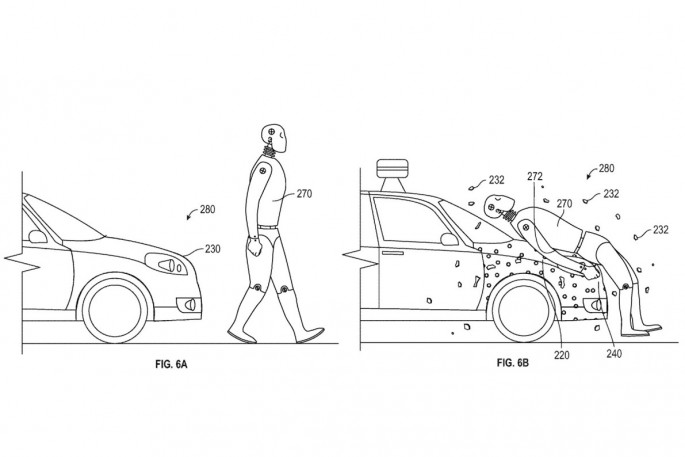Google's new patent features a solution to help minimize damage of auto accidents that involve self-driving cars. The human flypaper concept that was given a thumbs up describes an "adhesive layer" that would be located on the front end of an autonomous vehicle (AV).. Pedestrians would stick to the glue during a car crash.
The Alphabet subsidiary was issued the patent earlier this week. A human would stick on the vehicle until it stopped, to prevent the person from being thrown from the driverless car, according to The Verge.
Google explains that its car safety feature would prevent a secondary impact. That would be between the pedestrian and road surface or another object.
The patent points out that many injuries due to car accidents are not caused by the original collision. Instead, they often happen when the walker bounces off the car then hits the ground.
Google describes the car coating as flypaper or double-sided duct tape. It would also include an "eggshell" covering over the adhesive layer to prevent dirt and bugs from sticking to it. The outside layer would break during a collision, which would cause the sticky layer to be revealed.
As the patent notes this would not be the first method for preventing pedestrian injuries during car crashes. Volvo's system would deploy airbags from the bottom of the windshield, while Jaguar's system would raise the hood after contact with a pedestrian to provide a softer impact.
However, the Google patent points out that neither of the two automakers' systems would help to prevent injuries from pedestrians thrown from the vehicle.
Google admits that the first robotic cars on the market will hit pedestrians. That will happen until AVs are able to avoid all accidents.
Meanwhile, the number of pedestrian traffic deaths in the United States has been increasing. The Governors Highway Safety Association reports the figure increased 10 percent last year.
Bryant Walker Smith is a Stanford School of Law professor and autonomous car expert. He praised Google for the new patent.
However, Smith also noted that a person stuck to a car could be in a worse collision if the vehicle then crashed into another object, according to The Mercury News. The engineering solution to a problem could create a new set of problems.
Here's a video on the safety of self-driving cars:



























